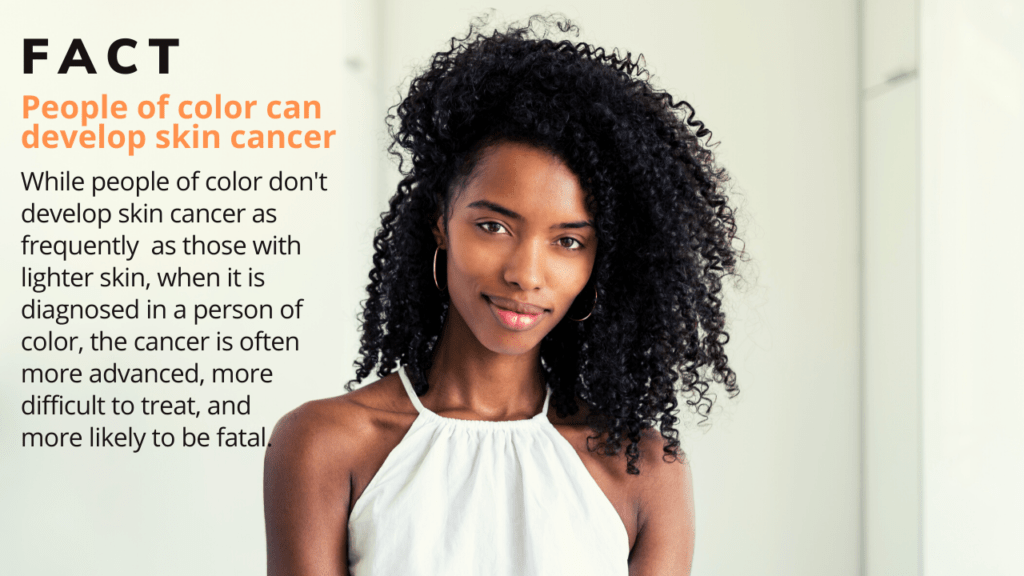Skin Tone

What Skin Tone is More Prone to Developing Melanoma?
Those with lighter skin tones or skin types are at greater risk for developing melanoma. Your likelihood of burning or tanning is based on your skin tone and the amount of UV exposure you receive. Dermatologists classify skin types by The Fitzpatrick Skin Type system, first developed in 1975 by Thomas Fitzpatrick, MD, of Harvard Medical School. There are six skin types in his classification system. Type I is the lightest and VI is the darkest. Those who have skin types I and II have the highest risk of developing melanoma. Those who have skin types V and VI have the lowest risk.
Do You Know Your Skin Type?
Skin Type I

The common characteristics of this skin type are:
Skin: Very fair skin that always burns and is unable to tan. Most sensitive to UV exposure.
Hair: Natural red or blonde hair
Eyes: Light-colored blue, gray, or green
Skin Type II

The common characteristics of this skin type are:
Skin: Fair skin that tans minimally even when trying to tan
Hair: Blonde hair
Eyes: Blue, gray, or green
Skin Type III

Skin: Light skin. Burns moderately, tans gradually and evenly to light brown.
Hair: Dark blonde or light brown
Eyes: Brown or hazel
Skin Type IV

Skin: Olive skin. Burns minimally, always tans well to medium brown.
Hair: Brown to dark brown
Eyes: Brown
Skin Type V

Skin: Brown skin. Rarely burns, tans profusely to dark brown.
Hair: Dark brown to black
Eyes: Dark brown to black
Skin Type VI

Skin: Black skin, never burns. Least sensitive to UV exposure.
Hair: Brownish black to black
Eyes: Brownish black to black
Can People of Color Develop Melanoma?
Yes, everyone can develop melanoma. While people of color are less likely to develop melanoma due to greater amounts of melanin (the pigment that gives skin and eyes their color) in their skin, no skin tones are immune from the disease. In fact, acral lentiginous melanoma (ALM) is more commonly found in darker-skinned people than lighter-skinned people. This type of melanoma is an especially fast-growing form of melanoma.
Because many people believe melanoma does not affect those with darker skin, diagnoses in darker-skinned people are often delayed, sometimes until the disease is advanced and potentially fatal. So while melanoma is much more common among lighter-skinned people, it tends to be more deadly among people of color.
Although Fitzgerald skin types I and II are the highest risk for melanoma, all skin types can develop melanoma. No matter your skin tone, you should use sunscreen, see a dermatologist for yearly skin checks, and check your own skin monthly for changes to moles or other lesions.


